While addressing the 2010 Chief Minister’s conference on internal security, the Home Minister P Chidambaram stated the plan of action against Left Wing Extremism (LWE) in the following words: “At the last Conference of Chief Ministers, I had announced that we would encourage State Governments to talk to the Naxalites if they abjured violence. Our public offer was scoffed at and spurned by the CPI (Maoist). Hence, in consultation with the Chief Ministers of Naxal affected States, we decided to boldly confront the challenge thrown by the CPI (Maoist). Consequently, there was a rise in the number of deaths in 2009 amongst civilians (591), security forces (317) and militants (217). As the security forces move forward to reclaim areas that are now dominated by the Naxalites, it is possible that this trend will continue in 2010 too. However, I am confident that the State Governments concerned will gradually gain the upper hand and re-establish the authority of the civil administration.”
After a year of boldly confronting the Naxals, he, reviewing the developments of 2010, puts his assessment in these words during the 2011 Chief Minister’s Conference: “Looking back at 2010, my assessment is that there is a kind of a stalemate. The State governments concerned cannot claim any major advance, nor should we conclude that the CPI (Maoist) has gained the upper hand. There have been casualties on both sides.”
The Home Minister’s assessment needs a comprehensive analysis so as to derive a long drawn strategy for administering the situation. He underlined that the situation is a stalemate. He conveys the same message in August 2010, saying that ‘patience is the key’ for containing the menace of LWE. The year 2010 is significant because the stakeholders of an anti-Naxal process, at every level, tried to share this understanding and make suitable strategic and tactical advancements. This must have helped in controlling the expansion and consolidation of the LWE movement in 2010 to a great extent, despite of some serious setbacks. As the Home Minister mentioned, the CPI (Maoist) “remains a powerful and determined adversary and has added at least four companies to the People’s Liberation Guerrilla Army (PLGA). Its goal remains seizure of power through an armed liberation struggle.” This situation may be a no win no loss situation.
But at the same time, the Left Extremist movement as well have predicted such a situation in 2004, or may be earlier. The Maoist document ‘Strategy and Tactics of Indian Revolution’ forecasts that they will face a stage of Strategic Stalemate, which ‘will end in a shorter time’ and will progress to a stage of strategic offensive. Now, the state has to make its own evaluations after assessing the past experiences, whether they will continue to face a stalemate for quite some time or will be able to make advancements, probably facing a ‘strategic offensive.’
I
Trends of Naxal violence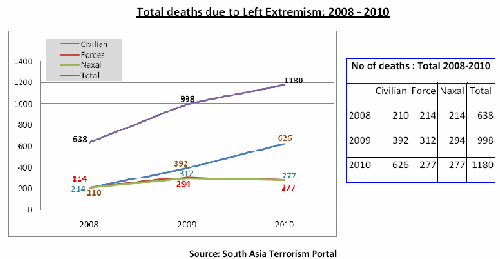
The data chart above indicates the development of the situation since past 3 years. The total number of deaths is on the increase. But, there was no increase either in the number of security personnel killed or in the number of Naxals,which indicates an operational stalemate. Meanwhile, 2010 witnessed a rapid increase in deaths of civilians – a total of 626, half of which is from West Bengal. The figures of civilian deaths were 392 and 201 in 2009 and 2008 respectively.
The anti-Naxal strategy of Indian government was seriously challenged by the following incidents of 2010:- 75 CRPF personnel and a policeman of Chhattisgarh police were killed in an attack by the CPI (Maoist) on a patrolling group in Dantewada district of Chhattisgarh.
- 44 persons, including 28 civilians and 16 Special Police Officers (SPOs), were killed when a bus was blasted by an IED in Dantewada district.
- 27 CRPF personnel including an Assistant Commandant were killed an ambush in Narayanpur district of Chhattisgarh, when they were returning from a road opening operation.
- 11 personnel of the Special Operation Group (SOG) were killed and eight others were seriously injured when CPI (Maoist) triggered a landmine blast in Koraput district of Orissa.
- 24 personnel, mostly from Eastern Frontier Rifles were killed and several others injured when a group of CPI (Maoist) armed cadre attacked a security camp at Silda in West Midnapore district of West Bengal.
- 148 passengers of the Gyaneshwari Express were killed and 145 injured by a blast on railway track in West Midnapore district of West Bengal.
The latest information regarding the geographical spread of the movement is the statement by the Home Secretary, Mr. G. K. Pillai on July 6, 2010 that there are 220 districts in India where some Maoist incident has happened. He says that 34 districts in the country are being classified as the worst Left-wing extremism affected districts while 83 districts are slightly or partially affected by the problem. The principal Naxal affected regions were identified from Andhra Pradesh to Nepal border, covering regions of Andhra Pradesh, Bihar, Chattisgarh, Jharkhand, Madhya Pradesh, Maharashtra, Orissa, and West Bengal.
In a statement given by in November 2010, Maoist General Secretary Ganapathy claimed that Maoists have consolidated control over areas of their influence and developed Lalgarh in West Bengal and Narayanpatna in Orissa as ‘guerrilla zones’.
Chhattisgarh, Jharkhand, Orissa, Bihar and West Bengal continue to be the most affected states with a significant increase in fatalities and incidents of violence. Some of the regions which witnessed either an increase or continued influence of Left Extremism include: 1) Dandakaranya spread over the Bastar region in Chhattisgarh, Gadchiroli and some parts of adjoining districts in Maharshtra, and some regions of Orissa, 2) Jangalmahal covering West Midnapore, Bankura and Purulia districts of West Bengal, 3) Andhra-Orissa Border region with Malkangiri, Koraput districts of Orissa and bordering areas of Andhra Pradesh, 4) Jharkhand and 5) Southern part of Bihar. Apart from these a few districts of Madhya Pradesh and Uttar Pradesh also registered an increase in Maoist influence and violence. Moreover, in 2010, the extremist movement has tried to expand activities into other districts of all these states as well as other states like Assam.
The pattern of violence in these states is evident from the figures below: Number of deaths due to LWE in 2010| States | Civilian | Security Forces |
| Andhra Pradesh | 17 | 0 |
| Bihar | 54 | 24 |
| Chhattisgarh | 72 | 153 |
| Jharkhand | 71 | 27 |
| Maharashtra | 22 | 15 |
| Orissa | 62 | 21 |
| West Bengal | 328 | 36 |
In West Bengal, the districts of West and East Midnapore, Purulia and Bankura are highly affected regions. The arrests of five Maoists including the secretary of the Nandigram zonal committee in West Bengal in June 2010 and the investigations followed revealed that they were given the task of building the party in South 24-Parganas, especially the Sunderbans. It was also revealed that the Maoists are trying to build a safe corridor from coastal West Bengal to Chhattisgarh through Gopiballavpur and Nayagram in West Midnapore, bordering East Midnapore and Orissa. Due to increasing incidents, the district administration of Birbhum, Nadia and Murshidabad have requested to be brought under the ambit of LWE affected area. All of these indicate that in 2011 the Maoists have gained some progress in their objective of converting West Bengal into a stronghold area and Jangal Mahal as its centre stage.
Another important development of the Left Extremist movement is the attempts to expand in the North Eastern states of India. The activities in North east also helped the Maoists to expand the Strategic United Front. On 12 April 2010, the Chief Minister of Assam, Tarun Gogoi said that the Maoists are trying to set up bases in Assam with the help of ULFA. Kanchan, the CPI (Maoist) state secretary of West Bengal, who was arrested in 2010, said that the CPI (Maoist) has made Deepak, a Politburo member in charge of north east. The arrest of Chila Roy, an operative of Kamtapur Liberation Organization (KLO) revealed that the Maoists have linked up with the KLO and a section of ULFA. There were also reports that cadres of the Adivasi National Liberation Army (ANLA) of Assam received training from the Maoists in Jharkhand. A two days joint meeting was held between the CPI (Maoist) and the Revolutionary People’s Front (RPF) of Manipur at the Council Head Quarters of the RPF on 21-22 October 2008. They issued a joint declaration regarding various levels of coordination of their movements. On April 21, 2010 the CPI (Maoist) declared solidarity with the labourers from Bihar and Jharkhand in Manipur who were given ultimatum to leave the state by Manipuri rebels. Even a delegation led by a member of the Tirhut sub-zonal committee visited Manipur and later gave an ultimatum to Manipuri students studying in Bihar, Jharkhand, West Bengal and UP to leave those states. Activities of a militant outfit called Santhali Tiger Force which is suspected to be a Maoist organisation were reported from western and northern Assam districts, especially the tea belts.
Eastern part of Uttar Pradesh, particularly Sonebhadra district has registered an increase in Naxal violence in 2010. Blasts, encounters with security forces, recovery of arms etc were among the many Naxal related activities reported from this region. The Sone Ganga Vindhyachal Zonal Committee consisting of Chandauli, Sonebhadra, Mirzapur in UP and Buxar, Rohtas, Bhojpur and Bhabhua districts in Bihar continue to be one of the highly Naxal affected regions.
Another region which recorded gradual increase in LWE activity is the Madhya Pradesh–Maharasthra border region, especially the districts of Balaghat, Seoni, Vidharbha, Nagpur etc. Bandu Meshram, a Maoist arrested in February 2010 revealed that the CPI (Maoist) is preparing a plan to create a strategic exit route from Chhattisgarh to Madhya Pradesh where they could move swiftly in case of an emergency, especially in Abuj Marh. They have identified safe havens like the forest areas extending from the Bhandara-Gondia-Balaghat junction in east Vidarbha to Pench National Park in Nagpur and Seoni districts, via the Nagzira wildlife sanctuary. In 2010, areas of Balaghat have witnessed a large spurt in Maoist activity.
Spread of the movement continued in states of Punjab and Haryana has been witnessed in the last year. The Chief Minister of Punjab as well the DGP expressed their concern over the increase of LWE activities in the state. The activities in these states were not more of armed cadre based, but through front organisations. The DGP of Punjab, P.S.Gill announced the activities of atleast 15 Maoist front organisations. Many of the labour unrests in Punjab, including the one in Postgraduate Institute of Medical Education and Research (PGIMER) at Chandigarh were identified as motivated or organised by Maoists. The districts of Malwa, Majha, Doaba, Dhuri, Barnala, Jalandhar, Ferozepur, Mansa and Bathinda of Punjab were among those which have seen Left Extremist activities. Half a dozen Maoist leaders were arrested from the state. The arrest of CPI (Maoist) Politburo member Kobad Gandhy revealed information on the activities of the organisation in the region. Punjab police has also set up a special cell headed by an officer of SP rank to deal with Maoist activities. While a gradual rise in Maoist activities was found in Yamunanagar district of Haryana, a few incidents were reported from other districts viz. Narwana, Uchana, Kaithal, Kurukshetra and Karnal.
There were Maoist expansion plans and activities in South Indian states of Karnataka, Tamil Nadu and Kerala. The arrest of CPI (Maoist) Karnataka state committee secretary Chandrashekhar Gorebal in June 2010 revealed details about their expansion plan in the Western Ghats of Karnataka. Earlier in 2009, in a Maoist meeting in Karnataka it was decided to organise the activities in Kannur and Wayanad districts in Kerala, Dakshina Kannada, Udupi and Kodagu districts of Karnataka and areas such as Gudalur in Tamil Nadu under a special zonal committee. There were reports that the CPI (Maoist) attempted to establish a state committee in Kerala, but later dismantled this and brought Kerala under direct control of the Central Committee. After the deaths of Central Committee members Sande Raja Mouli and Malla Raji Reddy and the arrest of Politburo member Kobad Ghandy, the Maoist spokesperson Azad was involved in organising Maoist activity in the South Indian states. But the killing of Azad in July 2010 and arrest of leaders of the states brought the activities to a low in the past one year.
There were also indications of attempts to come back in the Telengana region which was once the strong hold region of the Maoists and was cleared out through anti-Naxal operations of the government. The sentiments over a separate state of Telangana and the anti-Polavaram dam issue are among those which the Maoists are trying to exploit. There was a meeting of the Maoists from Dandakaranya and Andhra-Orissa border (AOB) region during mid 2010, which took important decisions over re-establishing control over North-Telengana, especially Khammam, Warangal and Karim Nagar districts and kick start an anti-Polavaram dam movement. A few incidents of violence also have been reported from North Telengana.
2010 also witnessed the unearthing of Maoist network working in the urban area. The Maoist document ‘Urban Perspective’, which is considered to be the manual for urban work, describes the major urban corridors of India where Maoist activities are planned. Among them, the Ahmedabad-Pune corridor and the Delhi region has been two principal areas where the Maoists could expand its network considerably in the past few years. The arrest of Surya Devra Prabhakar in March 2010 disclosed the blue prints of the activities along Ahmedabad – Mumbai stretch with Surat, incidentally an industrial hub, as its headquarters. Around 11 important leaders of the urban network of Maoist organisations were arrested in the Surat police range in the past year, including Kura Devender - a senior leader of CPI (ML) Janashakti, Sujata Swami - the wife of Mumbai area committee secretary of CPI (Maoist), Shakeel Pasha - secretary of Surat area committee and many others. A couple, in charge of Maoist activities in Delhi, Gopal Mishra and his wife were arrested in May 2010. They were responsible for recruitment of youngsters for the party cadre and leadership, in addition to running a trade union 'Mehnathkush Mazdoor Morcha' and expanding activities among workers in Noida and east Delhi. During the arrest of Sudip Chongdar, Bengal state secretary of CPI (Maoist), documents on the urban work of Maoists in Kolkata were seized, which include details of more than 200 workers of its city network.
Mass Movements
2010 saw significant Maoist backed mass movements including the People’s Committee Against Police Atrocities (PCAPA) in Jangalmahal region of West Bengal and Chasi Mulia Adivasi Sangh (CMAS) in Narayanpatna in Orissa. Even when the Maoists claim consolidation of control over these areas, there were many indicators of an eroding strength of the Maoist backed PCAPA in 2010 compared to the previous years. The year witnessed arrests of many of the senior leaders of PCAPA and neutralisation of the armed cadre of the Maoists. Despite being on a defensive owing to intense security action, the Maoists have continued to keep the death toll of civilians, especially that of CPI (Marxist) cadres at a very high. The killing of around 148 people by derailing the Gyaneshwari Express is one of the most gruesome instances of violence by PCAPA and the CPI (Maoist). This year, the CPI (Marxist) was in a better position by resisting the massive violent attacks the cadres of the CPI (Maoist) unleash on its cadres. After a period of significant low down, the Chasi Mulia Adivasi Samiti seemed to be consolidating its cadre and accentuating its violent activities in order to tight hold the lands which are under its physical control.
There were a few other mass movements which were suspected to be Maoist incited or organised. One such is the movement in Kalinganagar in Orissa, pitted primarily against the Tata Steel plant and organised by a Maoist front cover organisation Bisthapan Birodhi Janamanch, which evoked public unrest and thereafter clashes with the police many times in the year. Another noteworthy development of 2010 is the movement againt Andral Aerotopolis on Bengal, which as well was manifested in the form of a mass unrest.
Linkages2010 was marked with alarming developments in Maoist linkages, with agencies inside as well as outside the country including the links with Chinese agencies, Jihadis, ISI, North East insurgent groups, Nepali Maoists, Kashmiri separatists, Filipino Maoists and some Burmese insurgent groups.
The Maoist-ISI nexus was exposed by the arrests of gang men of Dawood Ibrahim and Chota Shakeel in Bangalore in August 2010, who were in touch with the Maoists, funding them and helping some Maoists get visas to Dubai. The DGP of Chhattisgarh, Vishwaranjan says that Lashkar-e-Taiyaba operatives are in regular touch with Left Extremists and LeT representatives were present in a meeting of the Central Committee of the Maoists in April-May of this year. The arrests of some senior Maoist leaders in West Bengal and seizure of radio communication devices revealed the close links with Jihadis, especially Kashmiri insurgents, who must have probably handed over technologies of radio controlled and voice activated explosive devices to the Maoists. The CPI (Maoist) has repeatedly proclaimed its support for a separate Kashmir through its press statements and interviews of senior leaders.
During his interrogation, the arrested West Bengal state secretary Kanchan revealed that some of the senior leaders have visited China and the Chinese made weapons and other materials seized from the arrested leaders are hard evidences for Indian Maoist linkages with China. BBC even reported connections of Maoists with the United Wa State Army (UWSA), a militant group of Myanmar, primarily for purchase of weapons.
The Central government warned the state governments about the India-Nepal Maoist linkages, mainly corresponding to crossing the borders for training and other purposes. In November, the Indian government sent a letter to Nepal government saying about a pact signed between CPI (Maoist) and Nepalese Maoists for sending cadres to and fro for training. It also had given information regarding 300 Indian Maoists who were trained by People’s Liberation Army (PLA) of Nepal, involvement of LeT operatives for providing military training and details of a number of training camps along the Indo-Nepal border.
As mentioned earlier, the Maoists also have forged alliances and partnerships with insurgent groups in North East, including ULFA, Kamtapur Liberation Organization (KLO), Adivasi National Liberation Army (ANLA) and Revolutionary People’s Front (RPF) of Manipur. The arrest of Kanchan has revealed much about the North East linkages including that of receiving arms and ammunition from Manipur’s People’s Revolutionary Party Of Kanglaipak (Prepak). He also disclosed that the CPI (Maoist) has employed a senior Politburo leader, Prasanta Bose, to liaison with the militant outfits of North East. The Maoist connections with the Filipino Maoist organisations came to light when two Maoist leaders were arrested from Gujarat this year, which was corroborated by government agencies of Philippines. The arrested Maoist leader Kanchan had even hinted about members of Communist Party of Philippines (CPP) having meetings with Indian Maoist in Chhattisgarh and West Bengal and Kobad Gandhy, a Politburo member visiting a number of countries.
FundingThe estimates of Maoist funding is still highly speculative. In 2009, there were many official opinions about this figure, including that of the Home Secretary, Chief Ministers and Police officials. The amount which the Home Secretary has speculated to be around Rs. 1400 crores may have increased, but the government still doesnot have proper estimates. A media report by the last of 2010, quoting an evaluation done by Indian intelligence agencies, estimated the total exchequer of Maoists to be around Rs. 2500 crores. But the sources of the funding are more or less explicit, which include extortion from private companies and individuals, levies from contractors etc, funding from national and intelligence agencies and many others.
Strategic United FrontThe year 2010 was one of the most successful periods for the Maoists, vis-à-vis, expanding their Strategic United Front, which is a loose association of tactical and opportunistic partnerships aimed at achieving certain intermediary objectives. Among the many friends, one of the most prominent alliances they could form was with Trinamul Congress (TMC), one of India’s major political parties. The Trinamul Congress has openly extended patronage to the PCAPA as well as Maoists and striking manifestations are the rallies the Trinamul Congress leaders attended together with the leaders of PCAPA. The arrested Maoist leaders of West Bengal including Telugu Deepak, Madhusudan Mandal, Kanchan and many others confessed about their ties with Trinamul Congress including of those days of the Nandigram unrest. Madhusudhan Mandal, the Nandigram zonal committee leader of the Maoists, during his interrogation, accepted that the Nandigram movement was spearheaded by TMC leader Shubhendu Adhikary together with Maoists as well as cadres of Indian National Congress and SUCI. The Maoist leader Kishenji has openly supported TMC and its leader Mamata Bannerjee and has promised to help her in the upcoming state elections.
Even during the Jharkhand elections in 2010, the Maoists were found supporting and endorsing candidates favourite to them. Other important political group which has come close to the Maoists is the Telengana Rashtra Samithi, whom the Maoists support for spearheading the issue of a separate state of Telengana. On numerous occasions, Maoist front organisations including the Revolutionary Democratic Front, allied with various other organisations over a wide range of issues like Kashmir separatism, anti Naxal operations, Salwa Judum, death of maoist leader Azad, ban on Muslim radical outfits like SIMI, Srilankan operations against LTTE, Babri Masjid etc. The organisations like PUCL, PUDR, CPI (ML) Liberation, Popular Front of India, radical members of Hurriyat Conference were seen associating with the Maoist United Front.
II.
In July 2010, the Home Minister echoed a word of confidence that LWE will be curbed within a span of three years. Towards achieving this end, the government adopted a two pronged strategy of security and development compounded with a holistic perspective. The Ministry of Home Affairs report 2010 states, “Government’s approach is to deal with Left Wing Extremism activities in a holistic manner, in the areas of security, development, administration and public perception. In dealing with this decades-old problem, it has been felt appropriate, after various high-level deliberations and interactions with the State Governments concerned, that an integrated approach aimed at the relatively more affected areas would deliver results.”
The anti-Naxal strategy of centre as well as the confidence expressed by the Home Minister will be forfeited if it lacks conception and application of adept strategy at the state level. The overall success in containing Naxal menace depends on how effectively each state succeeds in their respective strategies. The following figures give an overall view of the intensity of operations in each state.
Number of security forces killed in LWE violence| States | 2010 | 2009 |
| Andhra Pradesh | 0 | 0 |
| Bihar | 14 | 25 |
| Chhattisgarh | 147 | 121 |
| Jharkhand | 22 | 67 |
| Maharashtra | 10 | 52 |
| Orissa | 19 | 32 |
| West Bengal | 35 | 15 |
In 2010, some of the states like Chhattisgarh remained to continue as theatres of intense security operations and registered an increase of fatalities. At the same time, some other states, despite of intense or increased security operations, lost fewer number of security personnel compared to the previous years. A good example is Orissa, where the strategy of the state police and an increased coordination with Central Paramilitary Forces yielded better results and reduced the fatality rate. Chhattisgarh witnessed a rise in fatalities of security forces primarily due to tactical lapses. The year was important for West Bengal when it increased the force level and were successful in curbing, to a good extent, the influence of PCAPA and Maoists in Jangal Mahal, especially in West Midnapore district. The overall assessment, after considering the varied situations in each state, agrees that there is an operational stalemate at a national level. But it is noteworthy that the government was quite successful in emptying the authority of the Left Extremists from many areas of their influence, which serves as an indicator of achieving the target set by the Home Minister.
Strategic DecisionsThe Home Minister recalled during his speech at the Chief Minsiters conference in February 2011 - “Following the decisions of the Cabinet Committee on Security in October 2009, the Central government provided additional forces to the States affected by naxalism. The State governments too recruited more personnel, invested more in training, acquired better and more weapons, and boldly engaged the naxalites, more particularly the CPI (Maoist).” The year 2010 was the year of building up and consolidating the security force levels. The details of the deployment as stated by the Naxal management division of the Ministry of Home Affairs is that a total of 40 battalions of CPMF including BSF, CRPF, SSB has been deployed in 8 Naxal affected states, to assist the state police forces. In the Cabinet Committee on Security (CCS) meeting held in July 2010, it was agreed upon to setup a Unified command in Chhattisgarh, Jharkhand, Orissa and West Bengal aiming at ‘smooth coordination among various arms of the anti-Naxal grid.’ The CCS also agreed for the recruitment of Special Police officers, induction of helicopters, raising about 13 to 14 India Reserve battalions, setting up or strengthening 400 police stations, building roads and other infrastructure and appointment of an IG (anti-Naxal Operations). An important strategic aspect which was debated throughout 2010 and was later decided not to do was the employment of army in Naxal operations. Recruitment and training for the Commando Battalions for Resolute Action (CoBRA) forces, setting up of 20 Counter Insurgency and Anti-Terrorist (CIAT) Schools (four per state), reimbursement of around 210 crores to the states under the Security Related Expenditure (SRE) schemes, and an ambitious 13000 crore Integrated Action Plan (IAP) for 60 Naxal-affected districts in seven states were the important decisions taken or followed up in the past year. There were tactical relocations and reconfigurations of the deployed battalions of CPMF in various states. In majority of the areas, the deployment is still linear and is considered to be the best possible option considering the limitations and lack of resources in various theatres. For the first time, it was decided to deploy anti-Naxal forces in UP and Assam.
It should also be noted that, due to difference in opinions and lack of coordination between the states and centre or state police and central forces, many of these vital strategic decisions were either not implemented or delayed. The Unified command is a striking example. The West Bengal government tried to oppose the Centre’s suggestion of setting up the Unified Command with a retired army officer placed at tactical levels. There are issues with other states as well and thereby the concept of having a Unified command seems hanging by a thread. The disagreement between centre and state at tactical levels and the intermediary brawls between responsible authorities also have cost heavily to the state. Many of the operational failures of 2010, especially those in Chhattisgarh have happened because of this. This inadvertently weakens the entire anti-Naxal security mechanism of the country. But at the same time, there were concerted efforts at various levels to sort out these differences through deliberations and discussions.
Neutralisation and Arrests of leadersOne of the most significant achievements of 2010 is the neutralisation of Cherukuri Rajkumar alias Azad, one of the most senior leaders and the official spokesperson of the CPI (Maoist). The killing created a big leadership vacuum in the Maoist cadre, which the Maoists have not been able to recover yet. The Maoist movement also received a setback by the killing of of another senior leader, Sakhamuri Appa Rao, a Central Committee (CC) member and former head of Central Military Commission of CPI (Maoist). Apart from these, arrests of senior leaders including some of the Central Committee and Politburo members of the CPI (Maoist) are among the major achievements of anti-Naxal operations of 2010. These include arrests of Balraj alias Arvind, a PB as well as CC member and head of the northern regional bureau of the CPI (Maoist), Banshidhar alias Chintan, another PB member, Chandrashekhar Gorebal, Karnataka state committee secretary of CPI (Maoist), Kanchan alias Sudip Chongdar, a CC member and the architect of Lalgarh movement. Some other important arrests or neutralisations included the killing of Sidhu Soren, the head of PCAPA armed wing, arrest of Musafir Sahni, in charge of Bihar zonal committee, killing of Prabha, number three in Karnataka state committee and arrests or neutralisation of a number of zonal, regional and area commanders.
The unearthing of the urban network, particularly the Ahmedabad – Pune corridor and Delhi region were among the important advancements made. The arrests of 11 important leaders, active in Gujarat and Mumbai, including that of Shakeel Pasha - Surat area committee secretary, Kura Devender - CC member of CPI ML Janashakti, Surya Devra Prabhakar - CPI (Maoist) state committee member in Mumbai helped in revealing vital information regarding the Maoist urban network from Ahmedabad to Pune. The arrests of Gopal Mishra, the Delhi chief of CPI (Maoist) and another 10 Maoists helped in exposing the Delhi network.
Various arms suppliers as well as a highly experienced Maoist explosive expert were arrested. Huge caches of arms and ammunitions were seized at different locations from the Naxal affected states. A variety of weapons including AK-47, INSAS rifles, pistols (7.65mm), 9mm revolvers, detonators, gelatine sticks, crude bombs etc were among those seized.
Developmental plansThe government still sticks on to the two-pronged strategy of security operations with development. The Prime Minister says, “It (security measures) must also go hand in hand with social and economic development of areas affected by Left–Wing extremism, bringing them into the mainstream of national progress.” The annual report of Ministry of Home Affairs 2010 says, “While it is necessary to conduct proactive and sustained operations against the extremists, and put in place all measures required for this, it is also necessary to simultaneously give focused attention to development and governance issues, particularly at the cutting edge level. Towards this end, there is need to develop short term programmes, involving activities such as holding health camps, effective implementation of the Public Distribution System, provision of drinking water facilities and other basic needs, as well as medium and long term measures for overall development of the area as per a time bound action programme. In this context, the large amount of funds available to the States under various Central Schemes like the Backward Districts Initiatives, Backward Regions Grant Fund, the National Rural Employment Guarantee Scheme, the Prime Minister’s Gram Sadak Yojna, the National Rural Health Mission Scheme and Sarva Siksha Abhiyan acquire special significance and can go a long way in alleviating the situation and circumstances which the Left Wing Extremists attempt to exploit.”
This year the administration could make inroads into the backward and remote regions of the country, where grievances of the people are exploited by the Left extremists. Most of the initiatives discussed above in the report were put in place successfully in most of the Naxal affected districts. These schemes may take more time for being implemented effectively owing to a hostile environment created by the Maoists.
The Planning Commission has proposed a Rs 13000 crore Integrated Action Plan for 35 Naxal affected districts, focusing on NREGA, roads, health, education, electricity, nutrition etc. It has also recommended handing over forest lands to tribals and setting up ‘mineral funds’ for tribal welfare in mineral rich districts. Later, it was asked to enlarge the plan by including more districts.
ConclusionThe Left Extremists clearly understand and realise that this is a protracted war for them. They have the advantages of terrain, absence of administration, grievances of people and the laxity of time. Meanwhile, the state has the limitations of hostile terrain, lack of intelligence, questions over legitimacy, inadequate security force levels and constraints of time. Every strategy the state proposes should be in accordance with its limitations and the enemy’s advantages.
2010 was one of the bloodiest years. The state lost as much as it gained. The year witnessed fiascos of Tadmetla, Silda, Gyaneshwari Express alongside many others. It lost 277 security personnel and 626 civilian lives. Many areas like Dandakaranya, Andhra-Orissa border districts, Southern Bihar and some districts of Jharkhand continue to remain strongholds of Naxals where at times the rebels over run the writ of the state. But the state succeeded in preventing the Naxals making headways in many areas. Many areas were liberated from Naxal influence including parts of Jangal Mahal and re-established the authority of state.
The Home Minister P Chidambaram, in one of his addresses in 2010 said, “I think the people of India understand - even if the critics do not - that the conflict will be a long drawn one, that patience is the key, that mistakes will be made and the security forces need material and moral support to carry out their tasks.” But, additionally, if to win this ‘protracted war’, the state has to evaluate its strategic lapses of the previous years and draw out lessons to remodel its anti-Naxal strategy.
----------------------------------- Published Date : 8 April, 2011


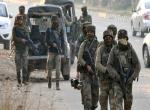
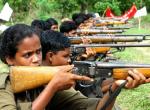
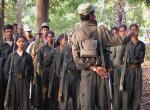

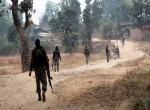
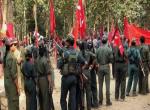
Post new comment